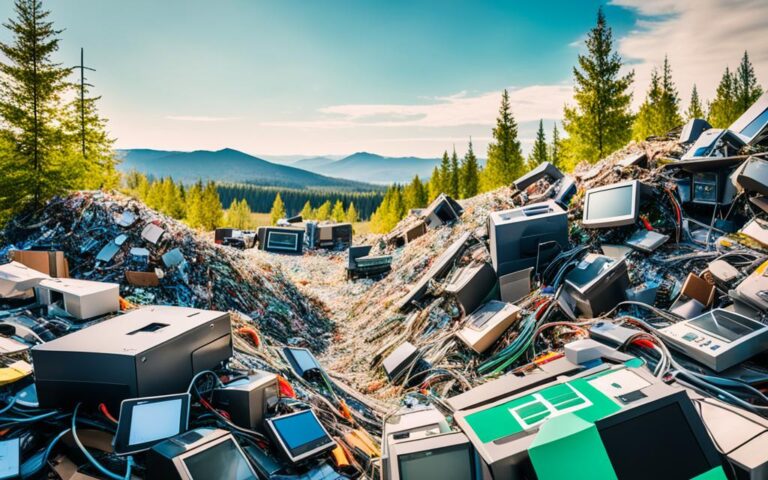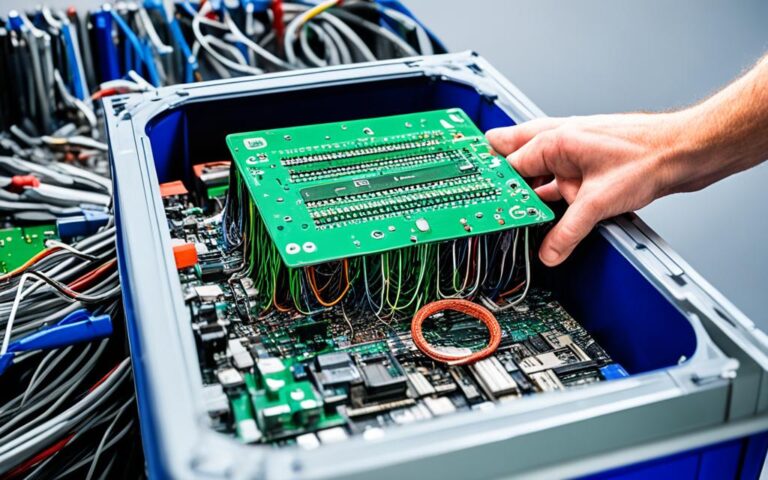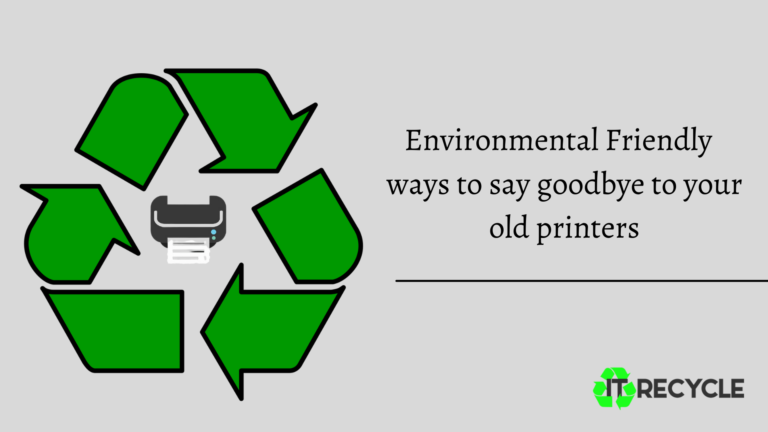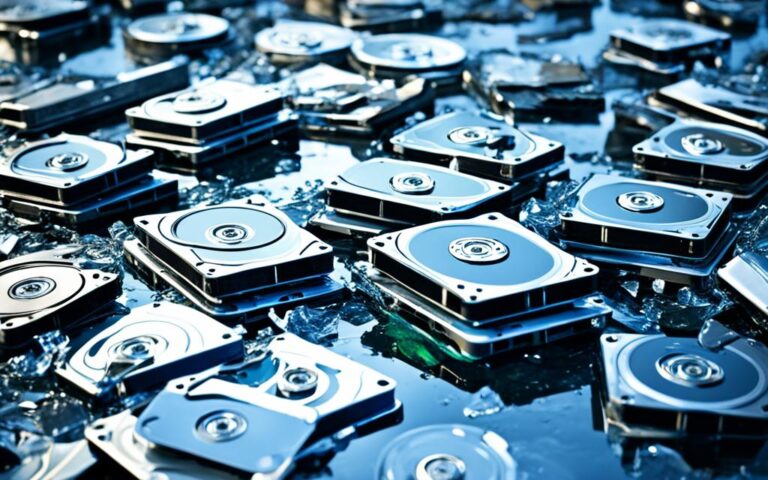Addressing the Challenge of Data Residue on Disposed Devices
The ITSP.40.006 v2 IT Media Sanitization publication provides guidance for IT Security Practitioners and authorities to help reduce the risk of exploitation of residual data on IT equipment with electronic memory and/or data storage media. This guidance applies to data at all levels of sensitivity and emphasises the need for effective data residue management to protect privacy. The publication highlights the vulnerability of departmental data on disposed devices, even if the data was supposedly deleted, and the potential for unauthorised disclosure. It also incorporates risk management principles and describes the life cycle process for IT media, including departmental policies, procedures, and requirements for encryption, sanitization, and disposal. By following the guidance provided, organisations can ensure the secure disposal of data residue and protect sensitive information from unauthorised access or disclosure.
Why Data Residue Management is Important
Data residue management is crucial to protect sensitive information and maintain data privacy. The presence of residual data on disposed devices poses a significant risk, as threat actors can exploit this data to extract potentially sensitive information. Simply deleting data from devices is not sufficient to prevent unauthorized access or disclosure.
Effective data residue management practices, such as encryption, sanitization, and secure disposal, are necessary to mitigate these risks and ensure the confidentiality of data. By implementing proper procedures and following guidelines such as ITSP.40.006 v2, organizations can minimize the potential for data breaches and protect their privacy.
“Data residue management is crucial to protect sensitive information and maintain data privacy. The presence of residual data on disposed devices poses a significant risk, as threat actors can exploit this data to extract potentially sensitive information.”
The Risks of Residual Data
Residual data on disposed devices can expose organizations to various risks, including:
- Data Breaches: Threat actors can retrieve residual data and use it to gain unauthorized access to sensitive information, leading to data breaches and potential financial and reputational damages.
- Identity Theft: Personal and financial information left as residue on devices can be used for identity theft and other fraudulent activities.
- Regulatory Compliance Violations: Failure to properly manage residual data can lead to non-compliance with data protection regulations, resulting in legal consequences and financial penalties.
These risks highlight the importance of implementing secure disposal practices and data privacy protection measures.
Effective Data Residue Management Practices
To address the risks associated with residual data, organizations should adopt the following practices:
- Encryption: Encrypting sensitive data ensures that even if residual data is accessed, it remains unreadable and unusable.
- Sanitization: Sanitizing devices involves securely erasing all data to an irrecoverable state, rendering it inaccessible to unauthorized individuals.
- Secure Disposal: Properly disposing of devices using approved methods, such as physical destruction or recycling through certified facilities, can eliminate the risk of residual data being retrieved.
By implementing these practices, organizations can significantly reduce the residual data risk and protect their sensitive information.
Best Practices for Data Privacy Protection
Alongside data residue management, organizations should prioritize data privacy protection through:
- Implementing access controls and authentication mechanisms to restrict unauthorized access.
- Regularly updating and patching software and systems to address vulnerabilities.
- Training employees on data privacy policies and best practices to ensure compliance and awareness.
- Regularly conducting risk assessments to identify potential gaps in data privacy protection and address them proactively.
By adopting a holistic approach to data privacy protection and incorporating secure disposal practices, organizations can safeguard their data and protect themselves from potential risks.
| Data Residue Risk | Secure Disposal Practices | Data Privacy Protection |
|---|---|---|
| Exposes sensitive information to unauthorized access. | Encryption, sanitization, and secure disposal. | Access controls, authentication, regular updates, and employee training. |
| Potential for data breaches and financial damages. | Properly disposing of devices using approved methods. | Risk assessments and compliance with data privacy policies. |
| Risk of identity theft and regulatory compliance violations. | Physical destruction or certified recycling facilities. | Regular patching of software and systems. |
Understanding the Sanitization Process
Data sanitisation is a crucial step in the secure disposal of devices with residual data. It involves converting sensitive data on storage media to an unclassified state, making it non-recoverable and suitable for reuse or disposal. Various methods can be used for data sanitisation, including overwriting, degaussing, encryption, and media destruction. The ITSP.40.006 v2 publication provides detailed guidance on the sanitisation process, including the steps involved and the importance of encryption throughout the lifecycle of media.
Proper disposal of residual data is essential to prevent unauthorised access or retrieval. By following the recommended sanitisation procedures, organisations can effectively dispose of residual data and protect sensitive information. Let’s take a closer look at some of the key methods used for data sanitisation:
1. Overwriting
Overwriting is a commonly used method to sanitise data. It involves replacing existing data with random or predefined characters, making the original data unrecoverable. This process is usually repeated multiple times to ensure the complete elimination of residual data.
2. Degaussing
Degaussing is primarily used for magnetic media, such as hard drives and tapes. It involves exposing the media to a strong magnetic field, which disrupts the magnetic domains and erases the stored data. Degaussed media becomes unreadable, ensuring secure data erasure.
3. Encryption
Encryption is a preventive measure that protects data at rest and in transit. By converting data into an encrypted format, it becomes unreadable without the appropriate encryption key. When disposing of devices, it is essential to ensure that encrypted data cannot be recovered by securely deleting or destroying the encryption keys.
4. Media Destruction
In some cases, physical destruction of the storage media is the most secure method of data erasure. This can involve shredding hard drives or melting optical discs, rendering the data irretrievable. It’s important to follow proper disposal protocols to ensure complete destruction and prevent any possible data leakage.
By employing these data sanitisation methods, organisations can effectively dispose of residual data and prevent unauthorised access or retrieval. Following these best practices ensures the secure management of sensitive information and reduces the risk of data breaches.
| Data Sanitisation Methods | Level of Security | Applicable Media |
|---|---|---|
| Overwriting | High | Hard drives, solid-state drives, tapes |
| Degaussing | High | Magnetic media: hard drives, tapes |
| Encryption | High | All storage media |
| Media Destruction | Highest | All storage media |
The table above provides an overview of the different data sanitisation methods, their level of security, and the applicable media. It is essential to choose the appropriate method based on the sensitivity of the data and the type of storage media being sanitised.
Countermeasures Against Data Remanence
Data remanence refers to the residual representation of digital data that remains even after attempts have been made to remove or erase the data. To counter data remanence, various countermeasures can be employed, including clearing, purging or sanitizing, and destruction.
Clearing
Clearing involves removing sensitive data in a way that it cannot be reconstructed using normal system functions or software recovery utilities. This method ensures that the data is overwritten and becomes inaccessible to unauthorized individuals.
Purging or Sanitizing
Purging or sanitizing physically rewrites the data to make it irrecoverable. By overwriting the data with random or repeated patterns, the original information is effectively destroyed, preventing any attempts at retrieval.
Destruction
Destruction makes the storage media unusable. Physical destruction methods, such as shredding or incineration, render the storage media completely inoperable, guaranteeing the permanent removal of any residual data.
Overwriting, degaussing, and encryption are specific methods used to counter data remanence. The choice of countermeasure depends on the specific requirements and sensitivity of the data.
Quote: “Data security experts recommend following recognized standards and guidelines, such as those provided by the National Institute of Standards and Technology (NIST), to ensure the effective implementation of countermeasures against data remanence.”
Implementing these countermeasures effectively can ensure the secure erasure of residual data and protect against unauthorized access. It is crucial for organizations to prioritize data remanence management to safeguard sensitive information and maintain data privacy.
The Challenges of Electronic Waste and E-Waste Recycling
Electronic waste, commonly known as e-waste, presents numerous challenges when it comes to proper disposal and recycling. This type of waste encompasses discarded electronic devices along with their associated components and materials. E-waste production is rapidly increasing due to the quick introduction of new electronics into the market and the shorter lifespan of these products. Unfortunately, only a small percentage of e-waste is currently recycled, with the majority ending up in landfills or being improperly disposed of.
E-waste poses difficulties for proper processing and material separation due to the presence of various materials such as glass, plastics, and different metals. The complexity of electronic devices and the demand for efficient recycling processes necessitate the development of cost-effective and efficient sorting and screening solutions. Additionally, the absence of uniform international regulations and the lack of awareness among consumers further complicate e-waste management.
The Impact of E-Waste
E-waste has a significant environmental impact if not handled properly. The toxins and hazardous substances found in electronic devices, such as lead, mercury, and cadmium, can contaminate habitats and pose a threat to human health. When e-waste is disposed of in landfills or incinerated, these harmful chemicals are released into the air, soil, and water, contributing to pollution and potential ecological imbalances.
Furthermore, the global economy is affected by the improper disposal and inefficient recycling of e-waste. As the demand for electronic products continues to rise, the capacity to safely dispose of or recycle outdated devices struggles to keep pace. This creates economic and logistical challenges, as well as missed opportunities for resource recovery and the creation of a more sustainable recycling industry.
The Need for Effective E-Waste Management
To address the challenges posed by e-waste, it is crucial to implement effective e-waste management practices. This includes raising awareness among consumers about the importance of proper disposal and recycling, as well as establishing uniform international regulations to ensure standardized procedures. Furthermore, investment in research and development is necessary to create advanced sorting and screening technologies that can efficiently handle the complex nature of e-waste.
Efficient e-waste management can lead to a range of benefits, including:
- Reduced environmental pollution and the preservation of natural resources
- Opportunities for resource recovery and the extraction of valuable materials from discarded electronics
- The creation of green jobs in the recycling and recovery industry
- A more sustainable and circular economy
The Future of E-Waste Recycling
The future of e-waste recycling holds both challenges and opportunities. With the rapid growth of the electronics industry, the volume of e-waste is projected to increase exponentially. By 2030, the annual production of e-waste is expected to reach nearly 75 million tons. As a result, there is an urgent need to develop innovative and efficient recycling technologies to ensure the proper management of this waste stream.
By investing in sustainable recycling practices and embracing a circular economy approach, it is possible to minimize the environmental impact of e-waste and create a more sustainable future for electronic devices. Collaboration between governments, manufacturers, consumers, and the recycling industry is key to overcoming the challenges of e-waste and ensuring the responsible management of this growing waste stream.
The Future of E-Waste and Its Impact on the Environment
The future of e-waste is projected to witness significant growth, with an estimated annual increase of 2.5 million tons. By 2030, the e-waste industry is expected to produce nearly 75 million tons annually. This surge can be attributed to shorter product lifecycles and limited repair options, resulting in a higher volume of discarded electronics.
Improper disposal of e-waste poses a severe environmental impact, contributing to habitat contamination and the release of harmful chemicals into the air, soil, and water systems. Furthermore, the global economy is adversely affected as the demand for electronics outpaces the capacity to safely dispose of or recycle outdated products.
To address these challenges, a circular economic model for e-waste is gaining prominence, emphasizing responsible disposal and recycling practices. Efforts should focus on:
- Increasing recycling rates
- Developing efficient processing techniques
- Establishing uniform international regulations for effective e-waste management
| Year | E-Waste Production (Million Tons) |
|---|---|
| 2022 | 50 |
| 2025 | 62.5 |
| 2030 | 75 |
By implementing sustainable practices and technologies, we can work towards a more environmentally-conscious future while safeguarding global economies and mitigating the adverse effects of e-waste.
The Importance of Efficient E-Waste Screening and Sorting
Efficient screening and sorting are crucial for effective e-waste processing. The complexity of electronic devices makes material separation and sorting challenging. Electronics consist of multiple materials, including glass, plastics, and various metals. Sorting and screening solutions play a vital role in the e-waste management process, including dismantling electronics, shredding or crushing components, separating fine materials, and sorting different metals.
Traditional technologies often struggle to handle the high volume and complexity of e-waste, leading to contamination and inefficiencies. Advanced screening equipment, such as BIVITEC flip flow screens and Freedom Disc Screens, offer efficient solutions for sizing and separating e-waste, improving material purity and reducing processing costs.
These technologies can help Material Recovery Facilities (MRFs) meet the increasing demands of e-waste processing and produce a cleaner product.
| Advantages of Efficient Screening and Sorting Solutions | Impact |
|---|---|
| Improved material purity | Reduces contamination and enhances recycling efficiency. |
| Reduced processing costs | Streamlines operations and leads to resource and cost savings. |
| Minimized environmental impact | Enhances sustainability by promoting responsible e-waste management and recycling. |
| Increased resource recovery | Enables the extraction of valuable materials from e-waste for reuse. |
Efficient e-waste screening and sorting solutions not only address the challenges posed by the complex nature of electronic devices but also contribute to the sustainable management of e-waste, promoting a circular economy and reducing the environmental footprint of discarded electronics.
Conclusion
Effective data residue management and secure disposal practices are crucial in protecting sensitive information and maintaining data privacy. By following guidelines such as the ITSP.40.006 v2 publication, organizations can minimize the risk of unauthorized access to residual data on disposed devices. It is essential to recognize that simply deleting data from devices is not enough to prevent potential breaches.
In addition to data residue management, proper e-waste management is essential in reducing the environmental impact of discarded electronics. As the volume of e-waste continues to grow, efficient screening and sorting solutions are needed to handle the increasing demands of processing and recycling. Implementing these practices and technologies supports a more environmentally sustainable future while safeguarding data privacy.
By prioritizing data residue management, secure disposal practices, and responsible e-waste management, organizations and recyclers can contribute to a safer and more sustainable digital ecosystem. Protecting sensitive information and minimizing the environmental impact of discarded electronics should be a collective effort, guided by industry best practices and regulations.
FAQ
What is data residue management?
Data residue management refers to the processes and practices implemented to secure data disposal and protect privacy. It involves effectively handling residual data on disposed devices to mitigate the risk of unauthorized access or disclosure.
Why is data residue management important?
Data residue on disposed devices poses a significant risk, as it can be exploited by threat actors to extract sensitive information. Simply deleting data is not sufficient. Proper data residue management practices, such as encryption, sanitization, and secure disposal, are necessary to maintain data privacy and prevent data breaches.
What is the sanitization process?
The sanitization process involves converting sensitive data on storage media to an unclassified state, making it non-recoverable and suitable for reuse or disposal. Methods such as overwriting, degaussing, encryption, and media destruction can be used for data sanitization.
How can data remanence be countered?
Data remanence, the residual representation of digital data, can be countered through measures like clearing, purging or sanitizing, and destruction. Clearing removes sensitive data in a way that it cannot be reconstructed, while purging or sanitizing physically rewrites the data to make it irrecoverable. Destruction renders the storage media unusable. Methods such as overwriting, degaussing, and encryption are used to counter data remanence.
What are the challenges of e-waste management?
E-waste management presents challenges due to the complex nature of electronic devices and the lack of uniform international regulations. The production of electronic waste is increasing rapidly, and improper disposal or inadequate recycling can lead to environmental contamination and impact global economies.
What is the future of e-waste?
The e-waste industry is projected to see significant growth, with an estimated annual increase of 2.5 million tons. By 2030, it is expected to produce nearly 75 million tons annually due to shorter product lifecycles and limited repair options. This growth poses environmental challenges and emphasizes the need for responsible disposal and recycling practices.
Why is efficient e-waste screening and sorting important?
Efficient screening and sorting play a crucial role in e-waste processing by facilitating material separation and ensuring the proper recycling of electronic waste. Traditional technologies often struggle with the complexity and volume of e-waste, leading to contamination and inefficiencies. Advanced screening equipment provides efficient solutions for separating e-waste materials, improving material purity, and reducing processing costs.
What is the importance of proper data residue management and e-waste disposal practices?
Proper data residue management ensures the protection of sensitive information and data privacy. Secure disposal practices, along with efficient e-waste management, are essential for minimizing environmental impact and promoting responsible recycling. By following these practices, organizations and recyclers can contribute to a more environmentally sustainable future while safeguarding data privacy.













